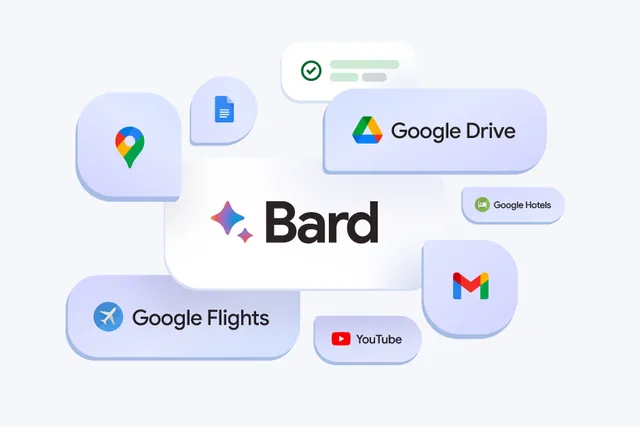Google’s Bard AI chatbot has expanded its capabilities beyond web search. Now it can dive into your Gmail, Docs, and Drive to help you find the specific information you need. This new integration allows you to ask Bard to perform tasks such as summarizing the content of an email or highlighting key points in a document stored on Drive.
The potential applications for these integrations, which Google refers to as extensions, are wide-ranging. They are designed to save you the time and effort of searching through piles of emails or documents to pinpoint the information you need. In addition, Bard can use this information in various ways, such as creating charts or generating bulleted reports. However, it should be noted that this feature is currently only available in English.
Read More: iPhone 15 Pro’s Altered Inertia Could Give the Impression of Being Lighter Than Its Weight Suggests
While giving Bard access to your personal email and documents may raise privacy and data usage concerns, Google has assured users that this information will not be used to train Bard’s public model and will not be viewed by human reviewers. Additionally, you have the ability to enable or disable these integrations with Gmail, Docs, and Drive, and you can disable them at any time.
To take advantage of this feature, according to Jack Krawczyk, product manager at Bard, you can either instruct Bard to search directly in your Gmail by starting your question with “@mail,” or simply ask Bard to “Check my email for information regarding my upcoming flight.”
Bard’s extensions aren’t limited to Gmail, Docs, and Drive. Google also revealed that the chatbot will be integrated with Maps, YouTube, and Google Flights, allowing you to request real-time flight information, discover nearby points of interest, access YouTube videos on specific topics, and more. Google enables these three extensions by default.
Jack Krawczyk explains the reasoning behind this experiment, stating, “The reason we’re starting this experiment… is primarily because it’s the first time a language model product actually integrates with your personal data. We want to make sure that right.” It also reveals that Google plans to expand Bard integration to include “across Google products as well as non-Google partners.”
In addition to these improvements, Google is introducing a new way to verify Bard’s responses through the chatbot’s “Google It” button. Previously, this button allowed you to search for topics related to Bard’s Answers on Google. It will now show whether Bard’s answers are consistent or inconsistent with the information from Google Search. Verified information will be highlighted in green, while unverified responses will appear in orange. You can hover over the highlighted sentences to get more context about what the Bard might have done right or wrong. Google is also rolling out a feature that lets you continue a conversation with Bard based on a shared link, allowing you to build on questions that others have already asked.
Since its introduction in February, Google has been constantly adding new features to Bard, including the ability to generate and debug code, as well as create functions for Google Sheets. Recently, Google incorporated support for Google Lens into Bard, which allows you to come up with ideas for captions for a photo or gather additional information about it.

